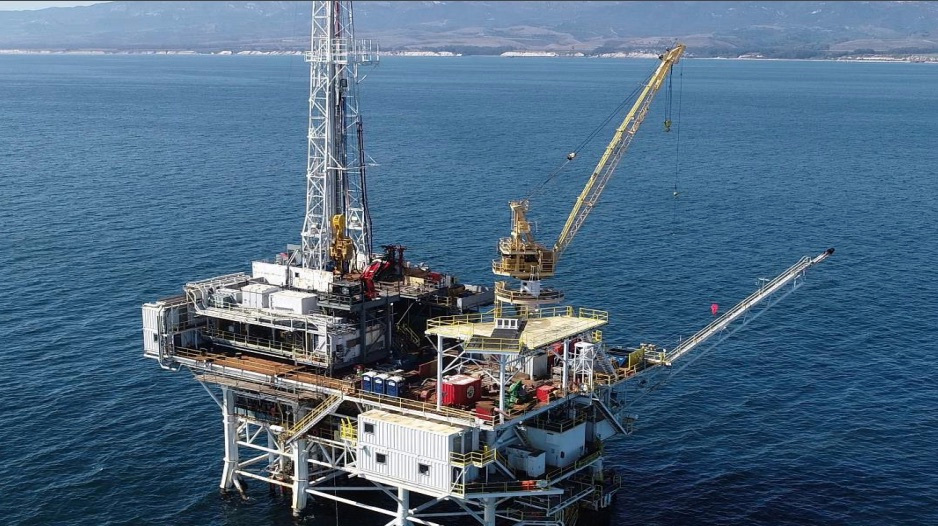“Our coastline will ultimately be free of oil infrastructure for the first time in over 100 years,” said Goleta Mayor Paula Perotte, looking forward to the prospect as she opened the discussion on Wednesday about the closure of wells associated with Platform Holly, namely the onshore piers near Haskell’s Beach.
Removing piers 421-1 and 421-2 is the next step in the State Lands Commission’s work to close facilities pulling oil from the Ellwood Oil Field, which lies deep beneath the Pacific Ocean and was formerly leased by now-bankrupt Venoco oil company. In the latest of a series of informational Town Hall meetings, senior staffers with State Lands explained the process that must occur before the decommissioning of the two wells and piers, namely an environmental report.
Both of the wells going into bedrock from what is usually called Pier 421 have massive structures to protect them from the ocean, said Jeff Planck, the project lead. He explained the caissons are 42 feet wide, 68 feet long, and 20 feet tall, and the seawalls are 12 and 14 inches thick. The associated piers that run to them from the shore are 80 feet long and 40 and 30 feet wide. Removing them would take about four months, he estimated, much of it only possible during low tide. Heavy equipment would be on the beach, some operations would necessarily occur at night, and demolition or removals would require closing the beach.
All that first requires a California Environmental Quality Act (CEQA) report, a process that takes longer than the actual work. Preparing that document would begin in the next few weeks and should be finished by year’s end; the removal work would occur in 2022. A CEQA report for Platform Holly could possibly be done alongside the piers’, but closing Holly’s 30 wells was stalled by the COVID pandemic.
Planck explained that the small size of Holly’s offshore platform and the number of people required to do the plugging and abandonment precluded anything but maintenance until workers could be vaccinated. Another issue was that the intervening year cost them access to Ellwood Pier, from which boats ferrying workers had departed. Negotiations with the owner were ongoing, he said, and the crew was instead using Goleta Pier.
Once work can resume, possibly in late summer, 15 wells remain to be plugged, said Seth Blackman, an attorney with State Lands. An expected voluminous public discussion of the CEQA document put its completion at about two years away; already, the meeting was peppered with questions about the use of the decommissioned platform. CEQA could possibly start in the midst of Holly’s plugging and abandonment, Blackman said.
Would they use dams to contain any spill at 421 like the one in 2019? asked Harry Rabin with Heal the Ocean. Planck answered that the wells were now completely sealed and without pressure. What they saw now were natural seeps, small globs of oil that appeared randomly, about a week’s worth most recently. Blackman added that simple sand berms would be placed during the low-tide work and that mitigation teams for any releases, including seeps, would be part of the crew.
Another piece of infrastructure associated with the oil field is the Ellwood Onshore Facility, which is where the oil came ashore and was held in tanks. Ownership of that facility is in dispute, and Blackman said they were still waiting on a decision from the court that had been expected in December.
The facility, which is between the Ritz-Carlton Bacara and Sandpiper Golf Club, occupies land where the Chumash lived for thousands of years. Jennifer Lucchesi, the executive officer for State Lands, made a point of thanking the tribe for their partnership. “We’d like to acknowledge and honor the Chumash people,” she said. “We know that repairing our relationship with the Chumash requires action in addition to acknowledgements. And we intend to do just that,” a hint of the potential to restore areas near Tecolote Creek.

